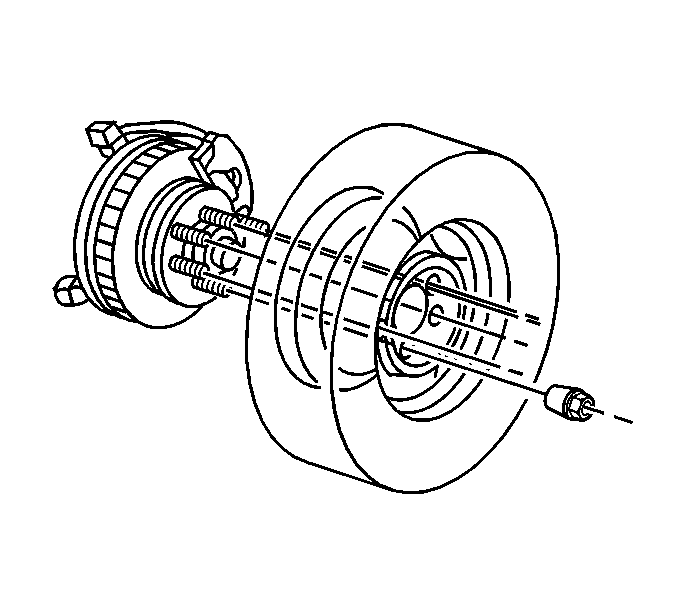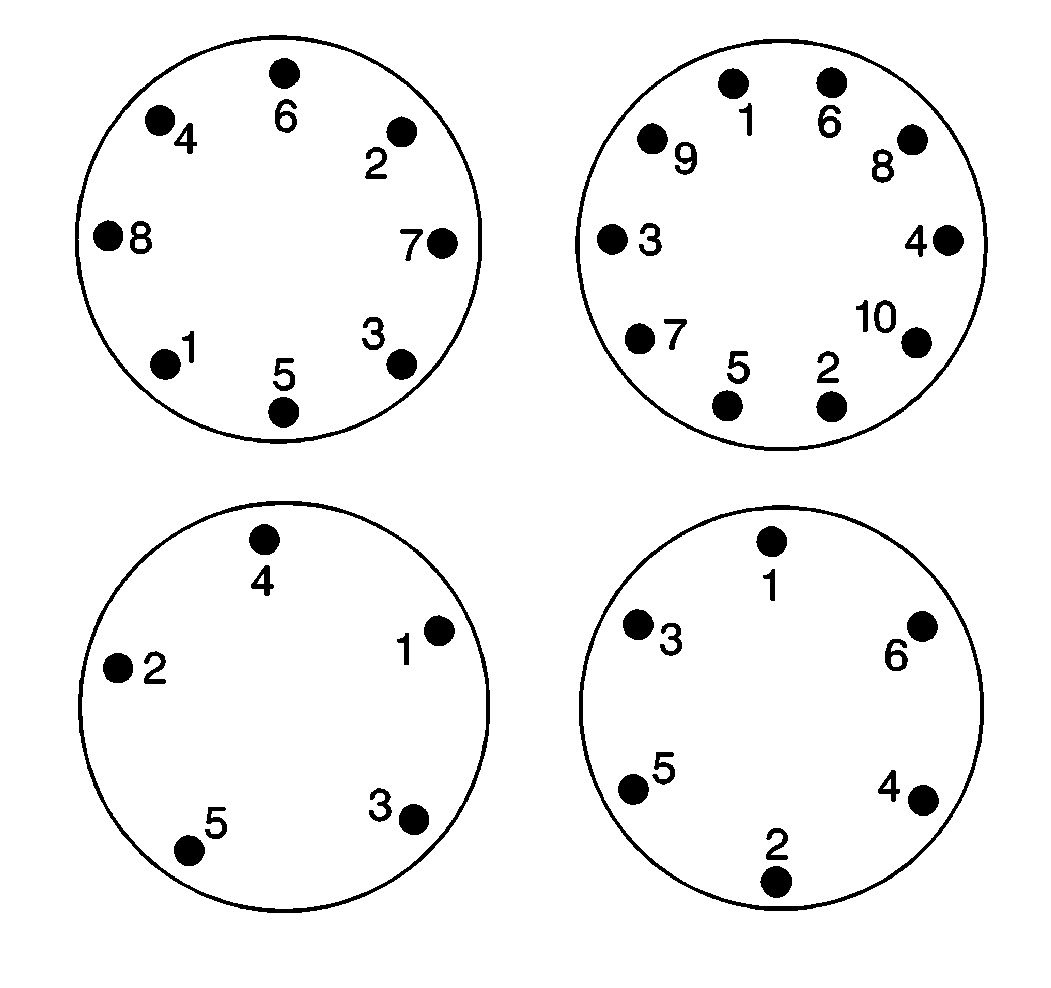Tools Required
J 39544-KIT Complete Torque Socket Set - 10 Pieces
Removal Procedure
- Raise and support the vehicle. Refer to Lifting and Jacking the Vehicle .
- Remove the wheel center cap, if equipped.
- Remove the wheel nut caps, if equipped.
- Mark the relationship of the wheel to the hub.
- Remove the wheel nuts.
- Remove the tire and wheel assembly from the vehicle. If the tire and wheel assembly is difficult to remove, perform the following steps:
- If the tire and wheel assembly still does not loosen, perform the following steps:
Important: If this vehicle is equipped with tire and wheel assemblies specific to the front and rear axles, ensure that the correct tire and wheel assembly is installed on the corresponding axle.

Caution: If penetrating oil gets on the vertical surfaces between the wheel and the rotor or drum it could cause the wheel to work loose as the vehicle is driven, resulting in loss of control and an injury accident.
Notice: Removing the wheel may be difficult because of foreign materials or a tight fit between the wheel and the hub/rotor. Slightly tap the tire side wall with a rubber mallet in order to remove the wheel. Failure to follow these instructions may result in damage to the wheel.
| 6.1. | Install and tighten all wheel nuts on the affected wheel. |
| 6.2. | Loosen each wheel nut 2 turns. |
| 6.3. | Lower the vehicle. |
| 6.4. | Rock the vehicle from side to side. |
| 6.5. | Repeat this procedure if necessary. |
| 7.1. | Start the engine. |
| 7.2. | Drive the vehicle forward and rearward slightly while applying quick, hard jabs of the brakes prior to changing direction. |
| 7.3. | Repeat this procedure if necessary. |
Installation Procedure
- Remove any corrosion or foreign material from the wheel and the hub mounting surfaces.
- Clean the threads on the wheel studs and wheel nuts.
- Align the reference mark and install the tire and wheel assembly to the hub.
- Install the wheel nuts.
- Using the J 39544-KIT , tighten the wheel nuts in the appropriate sequence shown.
- Install the wheel nut caps, if equipped.
- Install the wheel center cap, if equipped.
- Lower the vehicle.

Caution: Before installing the wheels, remove any buildup of corrosion on the wheel mounting surface and brake drum or disc mounting surface by scraping and wire brushing. Installing wheels with poor metal-to-metal contact at the mounting surfaces can cause wheel nuts to loosen. This can cause a wheel to come off when the vehicle is moving, causing loss of control and possibly personal injury.
Important: If the vehicle is equipped with directional tread tires, ensure that the directional arrow on the outboard side of the tire is pointed in the direction of forward tire rotation prior to installation on the vehicle.

Notice: Use the correct fastener in the correct location. Replacement fasteners must be the correct part number for that application. Fasteners requiring replacement or fasteners requiring the use of thread locking compound or sealant are identified in the service procedure. Do not use paints, lubricants, or corrosion inhibitors on fasteners or fastener joint surfaces unless specified. These coatings affect fastener torque and joint clamping force and may damage the fastener. Use the correct tightening sequence and specifications when installing fasteners in order to avoid damage to parts and systems.
Important: Tighten the nuts evenly and alternately in order to avoid excessive runout of the tire and wheel assembly.
Tighten
Tighten the nuts in sequence to 140 N·m (100 lb ft).
